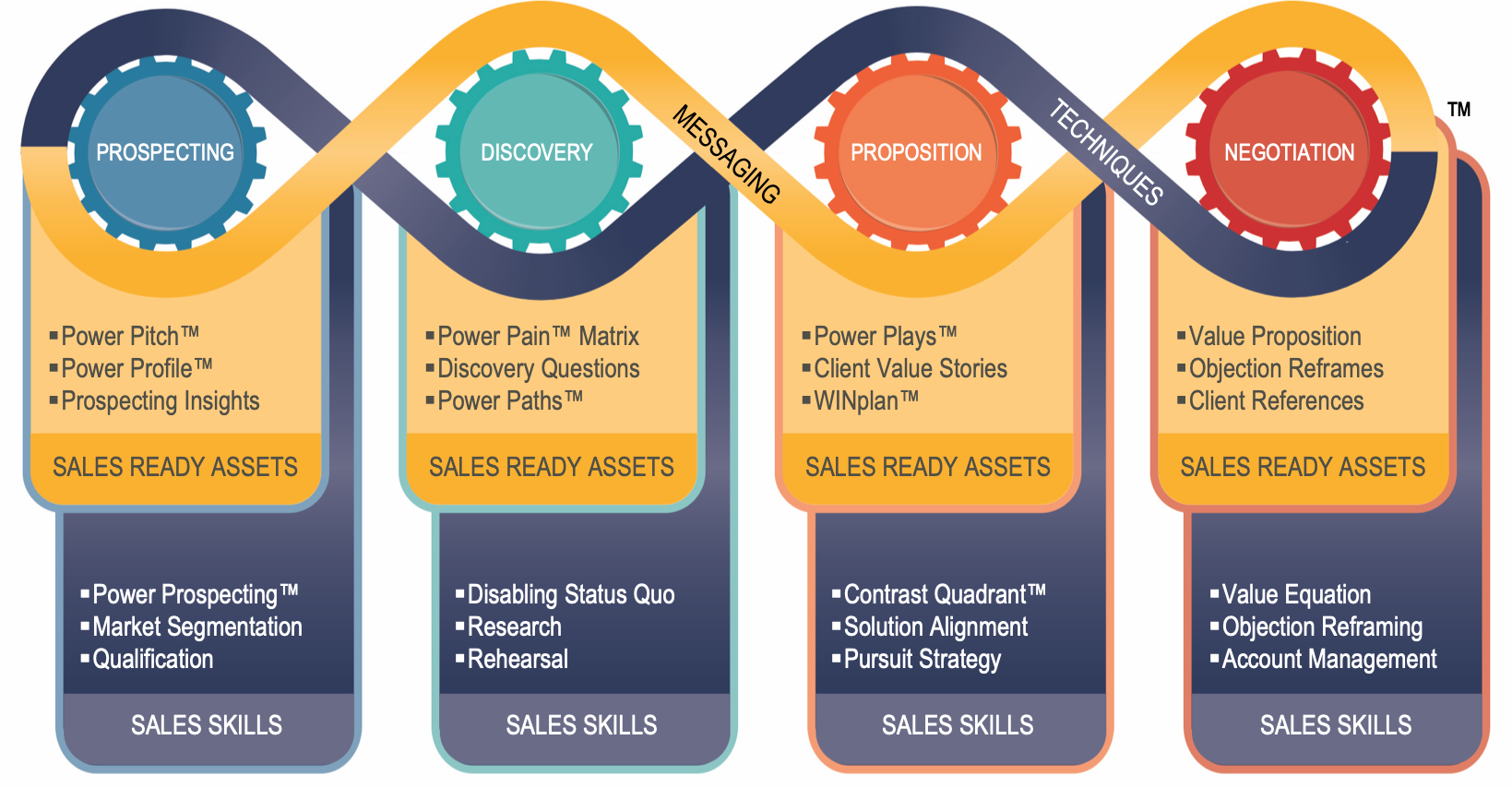Sales enablement programs are never one-size-fits-all. This is a challenge for leadership looking for a proven system to model their own program after — but it is also an opportunity. Your sales enablement program can and should be specific, strategic, and catered toward your people, your goals and your needs.
Though not every sales enablement program works for every business, there are guidelines to stand-up your strategy or to refresh a stale program. At Mereo, we have worked with leadership from hundreds of organizations, from Fortune 50 to start-up and private equity-owned to not-for-profit, to develop effective sales enablement programs that support sustainable revenue performance™. Here are the must-have pillars we have identified of any sales enablement program.
Sales Enablement Element 1: Buyer Journey–Aligned Sales Process
If your sales process does not sync with your buyer journey, your sales enablement program will not work. End of story. Take time to review your sales processes through this framework and improve any weaknesses:
- Are they strategic?
- Are they aligned?
- How are we training our people about the buyer?
- What results have we experienced? What do we expect into the future?
- What can we adjust to Seek to Serve our buyer on his/her journey?
Sales Enablement Element 2: Sales Skills and Techniques
Sales training is often mistaken as a synonym for sales enablement. While this is not true, much of the confusion comes from the fact that training is a vital part of sales enablement. But it is only that — one part of the greater whole.
Training programs should cater toward your organization, your salespeople and your selling objectives. The program cannot be a one-time session or a sales kickoff novelty — it is a program not an event. Training content should include education on the buyer (e.g. ideal profile, uses cases, pains), product knowledge (e.g. value proposition, differentiation), sales skills (e.g. prospecting, discovery, proposal, objection handling, negotiation, account expansion), sales tools (e.g. prospecting campaigns, discovery questions, conversation templates) and sales operations (e.g. sales process activities, CRM, contracting/commercials). While training activities should blend together classroom instruction, role-play exercises and activation strategies. Training should be an ever-present element in your organization’s practices, from refresh sessions, accountability follow-ups, and continual leadership support.
Learn how a sales training program put a B2B organization on the path to sustainable revenue performance within six weeks!
Sales Enablement Element 3: Sales-Ready Assets
Once your sales process is aligned to your buyer’s journey and your salespeople are well-educated and experienced with skills to sell, it is time to equip them with sales assets that drive your consistent and differentiated value messaging. While these sales-ready assets will vary from company to company, it is important to note they should also vary across your selling process stages:
- Prospecting Asset Examples: prospecting insights / entry points, prospecting conversation templates, ideal buyer profile
- Discovery Asset Examples: business / financial / personal pains of buyers, discovery questions, value drivers / business case
- Proposition Asset Examples: sales plays, solution differentiation, client value stories, proposal templates / demo scripts
- Negotiation Asset Examples: value proposition / business case, objection reframes, client references
Sales Enablement Element 4: Cross-Organizational Alignment
Fragmentation continues to threaten B2B organizations from delivering relevant value to their target buyers — and from reaching great revenue potential. For your sales enablement program to make an impact, it must be a creation that resulted from collaboration, agreement and commitment from every leader of your team, so that everyone is operating with a common, higher-order purpose.
Invite sales, marketing and product leadership to the strategy table. Keep everyone engaged and invested in the program roll-out and future check-ins and measurement gauges. Sales enablement is not for “sales enablement professionals” alone. The programs impact every part of an organization, overcome alignment barriers and interweave deliverables. As such, your program must have the input and insights from the entire organization for it to not only be strategically sound but also feasibly effective once in full swing.
Read the Sales Enablement Guidebook by Expert Tamara Schenk!
With these key sales enablement elements put into play from the start, your program has a great chance of making a difference for not only your salespeople but also for your buyers’ experiences and decision-making.
Learn how the sales enablement program transformation Mereo supported with Axway helped the information technology organization realize 4.4% year-on-year revenue growth.

